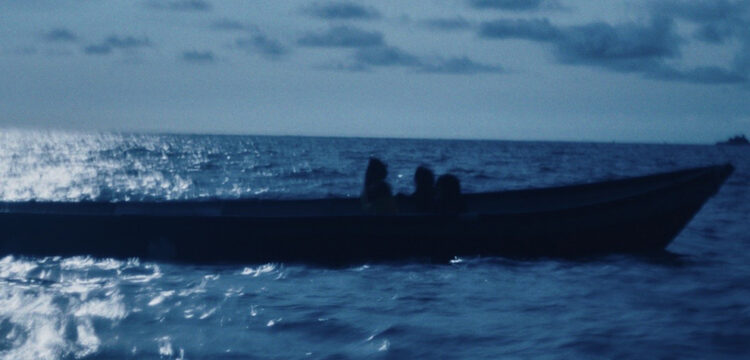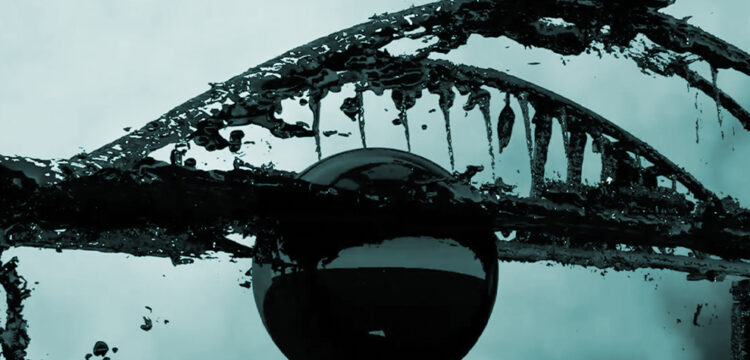Tropicalisation of the Mediterranean
A Ballardian reading of an ecological catastrophe
J.G. Ballard’s novel The Drowned World provides imaginative and speculative tools to envision the future of the Mediterranean following the process of tropicalisation initiated with the opening of the Suez Canal in 1869 and accelerated by climate change.
On 17th November 1869, the Suez Canal was opened to navigation, connecting the tropical Indo-Pacific Ocean with the temperate Mediterranean Sea for the first time since the Oligocene. Beside improving global logistics, this 190 kilometres canal also initiated a massive migratory movement of non-native forms of life coming from the Indo-Pacific Ocean, allowing the Mediterranean Sea to be colonised by tropical species. Enhanced by the rising temperatures of water, due to climate change, this process of “tropicalisation” is rapidly replacing the Mediterranean ecosystem with a new one. In addition to this, the predicted rising of sea levels, always caused by climate change, will also have a heavy impact on the territories bordering the Mediterranean Sea, dramatically reshaping the geography of islands and coastal regions. Furthermore, these climate and geomorphic mutations intersect with political instability of Mediterranean countries and amplify ongoing geopolitical tensions in the area, resulting in the increasing militarisation of this sea. In other words, the process that began in 1869 does not only involve an overturning of the ecosystem, but also a total transformation of the Mediterranean, thus requiring radical cultural, political and even anthropological paradigm shifts.
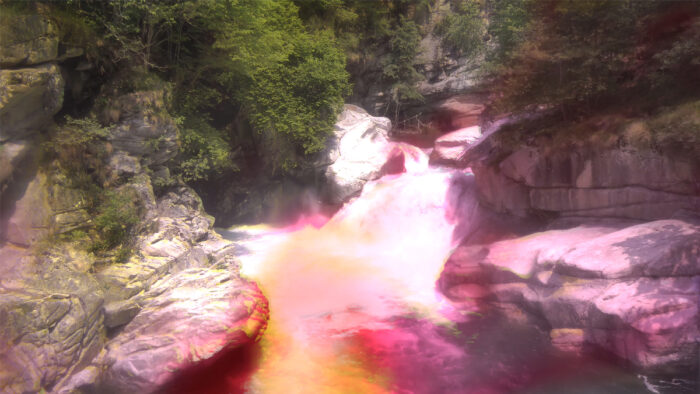
In 1962, the British writer J.G. Ballard published a novel titled The Drowned World where the process now investing the Mediterranean region is accurately depicted. Imagining a sudden increase of global temperature, with the consequent rising of sea levels and tropicalisation of former temperate areas, this novel provides useful imaginative and speculative tools to envision the future of the Mediterranean. Besides, it develops theoretical frameworks to operate the paradigm shifts necessary to cope with the mutation occurring in this region. The Drowned World presents a hallucinatory vision of the city of London that has been sunk beneath vast flood waters following the melting of the polar ice sheets caused by rapid global warming that resulted from a sudden increase in solar radiation. In the novel, London is described as a city that has been literally swamped by tropical flora and fauna, hosting “colonies of wolf spiders”, “giant iguanas” and “fern trees sprouting from [office blocks] roofs”: “The bulk of the city had long since vanished—it reads in the novel—and only the steel supported buildings of the central commercial and financial areas had survived the encroaching flood waters. The brick houses and single-storey factories of the suburbs had disappeared completely below the drifting tides of silt. Where these broke surface giant forests reared up into the burning dull-green sky, smothering the former wheatfields of temperate Europe and North America. Impenetrable Mato Grossos sometimes three hundred feet high, they were a nightmare worlds of competing organic forms returning rapidly to their Paleozoic past.”
The protagonist of the novel, Robert Kerans, is a biologist employed by the United Nations to carry out research in the former city of London, now turned into a tropical lagoon inhabited by primordial forms of life. As temperatures and humidity rapidly rise, Kerans experiences his own psychic transformation and eventually embraces this new environment before him, deciding to head south towards certain death. Kerans’ inner journey, therefore, intertwines with the process of transformation of the environment to the point where he decides to take it to the extreme consequences. Yet, talking about the character of his novel, in an interview with James Goddard and David Pringle in 1975, Ballard maintains that Kerans “is the only one to do anything meaningful. His decision to stay, to come to terms with the changes taking place within himself, to understand the logic of his relationship with the shifting biological kingdom, and his decision finally to go south and greet the sun, is a totally meaningful course of action.”
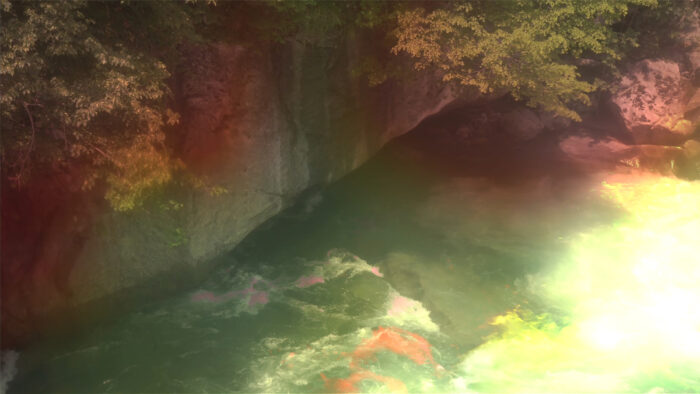
Although Ballard’s opinion might sound as a provocative or even fundamentally illogical statement, a similar approach is now proposed by theorists and researchers as the only possible way to cope with ongoing mutation in the global climate. Fifty years after the publication of the The Drowned World, the description of the environment contained in this novel seems to have moved into the latest reports of the IPCC (Intergovernmental Panel on Climate Change). According to the 2023 report, if CO2 emissions will not drastically decrease, global temperature will continue to rise, exceeding, by 2100, 3 Celsius degrees above pre-industrial temperatures; sea levels will rise up to a metre (even more in some areas); the oceans will warm and become more acidic; turbulence in the atmosphere will intensify, leading to increasingly extreme weather events. Yet, as noted by the artist and theorist Paul Dobraszczyk in his article Sunken Cities, although these events are already taking place, affecting ecosystems and life of human communities globally, political discourses around climate change are still dominated by future predictions, thus postponing the radical changes that need to be made in order to cope with a new climatic order. This future-orientated framework is perhaps the main reason why it continues to be so difficult to find common agreement amongst governments on how to act in the face of such an uncertain future. Furthermore, this way to approach such crisis results in international and national policy-making communities attempting to mitigate its effect rather than finding ways to adapt to it, even if the effects of climate change are already manifesting in their overwhelming scale. What Dobraszczyk suggests is a re-evaluation of the position of humans within the natural environment, in order to envision new forms of collective life able to adequately respond to the new scenario emerging from the dramatic mutation caused by climate change.
This epistemological shift in dealing with ecological catastrophes is outlined in its most radical terms by Ballard in his novel: human life and its ecosystem is so fundamentally entrenched that a radical ecological mutation requires an equally radical anthropological transformation. And this fundamental entrenchment is manifested in his novel through the figure of submergence, which informs the novel not only as a representable narrative experience, but also as a kind of inner logic explaining this entanglement of human and nonhuman at a material level. Yet, in The Drowned World, also the tragic and painful impact of this transformation clearly emerges, whose rationality escapes the traditional categories of instrumental reason. Kerans is hesitant about the prospect of departure. He tries unsuccessfully to find “an adequate reason” for his departure, tormented by “indecision” and “a state of tortured uncertainty”. But at the same time he is captured by an eerie sense of nostalgia for an “archaeopsychic past”. “Perhaps these sunken lagoons simply remind me of the drowned world of my uterine childhood” Kerans tells his partner Beatrice. Then he concludes: “if so, the best thing is to leave straight away.” What drives Kerans’ decisions and course of actions is an ancestral desire to return to a pre-subjective past, which does not correspond to a mere annihilation of his subjectivity, but to the intention of reaching a level of indeterminacy where “a total reorientation of the personality” becomes possible. In his dreams, the lagoon’s waters become “an extension of his own bloodstream” as he feels “the barriers which divided his own cells from the surrounding medium dissolving.” As the narrative unfolds, it becomes increasingly clear that in order to operate that reconfiguration of a form of subjectivity adequate to the new environmental condition, one has to dismantle previous subjective structures and momentarily dissolve into the pure immanent level of cosmos’ multiplicity of anonymous materials. It is not death, but a reunion with the boundless cosmic life necessary to recompose a form of subjectivity on different terms and in accordance to the new situation.
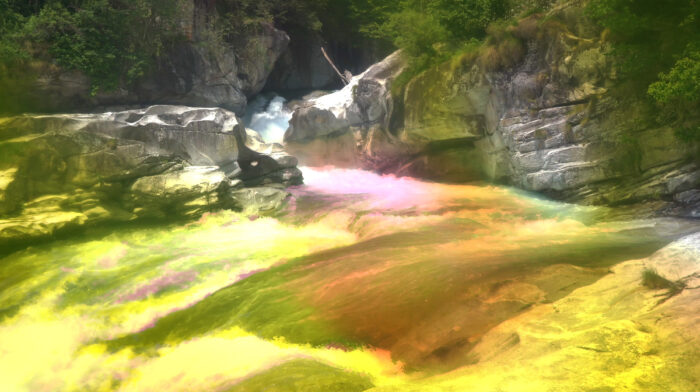
Drawing a direct link between this journey and psychoanalysis, Kerans’ colleague Alan Bodkin exposes the fundamental thesis of the novel: “Every step we’ve taken in our evolution is a milestone inscribed with organic memories […] each is a record of a thousand decisions taken in the face of a sudden physico-chemical crisis. Just as psychoanalysis reconstructs the original traumatic situation in order to release the repressed material, so we are now being plunged back into the archaeopsychic past, uncovering the ancient taboos and drives that have been dormant for epochs. The brief span of an individual life is misleading. Each one of us is as old as the entire biological kingdom, and our bloodstreams are tributaries of the great sea of its total memory”. This latent atavism in Kerens’ psyche gradually emerges and brings to light an archaic human unconscious, which demonstrates that the human was never separated from ecological circumstance in the first place. Ballard explains this assumption by deploying a hydrological imagery that links human history and geological systems via shared processes of submergence and inundation. In this way, he highlights the constitutive impossibility for the subject to withdraw from this fundamental condition. As always Bodkin states, “innate releasing mechanisms laid down in your cytoplasm millions of years ago have been awakened, the expanding sun and the rising temperature are driving you back down the spinal levels into the drowned seas submerged beneath the lowest layers of your unconscious, into the entirely new zone of the neuronic psyche”. What Bodkin suggests is an infiltration of the body itself by exterior and anterior environments, which deposits its material traces within human physiology via bloodstream and the spine. This resurgence of material forces, occurring even in the psychological realm, highlights the constitutive relationship between human subjectivity and inhuman environment. Therefore, rather than just narrating scenarios of destruction and extinction, Ballard’s novel hints to a new type of hybrid subjectivity in which the human and the inhuman are enmeshed. A kind of subjectivity that unveils the self-contained liberal humanist subject as illusory and shows how it is always already physically and psychologically mixed up with the inhuman materialities of its environment. So the environmental catastrophe described in his work is at the same time a scene of both disintegration of the individual subject and formation of conditions for the constitution of a new subject.
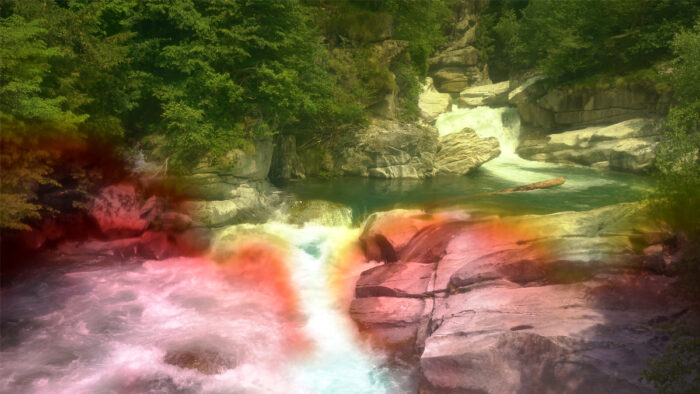
In line with this interpretation of The Drowned World, in his article Environmental Catastrophe as Morphogenesis, the scholar Moritz Ingwersen proposes a re-conceptualisation of Ballard’s depictions of climate disaster as sites of processes of subjective morphogenesis. In order to do so, he refers to the work of the mathematician René Thom, a foundational figure in complexity theory, who, in his book Structural Stability and Morphogenesis, describes “catastrophes” not as cataclysmic destruction, but as “local accidents of morphogenesis”. In material conditions lacking static equilibrium, where systems exist in constant motion and boundaries between internal and external environments are permeable, semi-stable orders continually emerge and dissolve. As Thom puts it, “the characteristics of all forms, all morphogenesis, is to display itself through discontinuities of the environment”. The geological transformation in Ballard’s novel can be interpreted via this logic of catastrophe, as the environment in which Kerans’ operates seems to be dislocated and persisting in a suspended, yet dynamic state, between chaos and a return to equilibrium. In Ballard’s work, catastrophes appear indeed as spatialisation of the boundary between transient worlds emerging from a chaotic reality in constant motion. They are described as a “zone of transit” or “waiting ground”, where the dissipation of current orders of reality creates the condition for new processes of morphologies to take place.
In this sense, The Drowned World offers valuable elements to reflect on the ongoing climate and geomorphic transformations of the Mediterranean, as it envisions a scenario in which a new climatic order challenges all aspects of human life, as well as elaborating conceptual frameworks useful to think through this change by taking into account all its radical consequences. Similarly to The Drowned World’s main character Kerans, we find ourselves in the situation in which we have no other option than recognising that this irreversible process of radical transformation of our environment is taking place. As a result, beside attempting to mitigate the effects of this transformation, it is urgent to find ways to adapt to it by reconfiguring our relationship with the surrounding environment.



